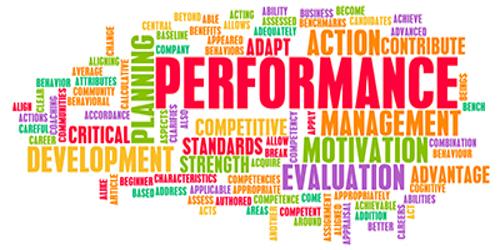12 Jun

Learn how PossibleWorks can help you
Introduction
Performance Management is an integral part of an organization’s operations to better manage its Human Resource. Through an effective performance management system, a company can motivate and engage employees for achieving organizational success.
However, traditional reviews completely miss the point of performance management as an employee’s performance is evaluated only during the year-end appraisal discussion. Traditional performance reviews wait till the end of 12 months before offering employees any feedback on their performance and that’s often too late for any corrections on part of the employees.
Additionally, the way traditional performance reviews are designed & executed are highly subjected to latency & recency effects. Here, knowingly or unknowingly managers evaluate an employee’s performance based on recent performance outcomes/experience rather than objectively considering the overall performance in the past year. Ironically, managers are expected to remember everything about each employee’s performance for a whole year. It is humanly not possible for managers to effectively use these mental notes pertaining to each employee. This results in biased evaluations on the part of managers which in turn leaves employees dissatisfied with annual performance appraisals.
Organizations need to understand that employee motivation and engagement is crucial to achieve business objectives. Just like in any top performing Sports team, the role of the coach is to constantly evaluate his team and offer corrective and constructive feedback for better performance. Similarly, employees also require timely & continuous feedback for course correction and performance improvement.
For example, adopting a 360 degree and continuous feedback approach not only keeps the employees motivated, but also helps them perform better, enhancing the overall organizational productivity. A digital performance management system can facilitate multiple feedback formats to record & share on-going and continuous feedback which goes a long way in keeping the information timely and relevant, leading to a more satisfactory annual performance appraisal.
Managers waiting an entire year to provide performance feedback are not helpful to the employee or the organization. After all, if the employee keeps repeating the mistake without realizing or correcting the same, it will have a direct adverse impact on the overall performance of the organization too. To strike a balance between an employee’s performance and their annual appraisal, a system of continuous feedback allows for regular improvements.
In fact, a recent study shows that almost 96% of interviewed employees want to hear regular feedback rather than annual ones.
Let us look at the top reasons how continuous feedback helps organizations in annual performance review.
1. Continuous Feedback Helps to Increase Employee Motivation & Engagement
Employees when provided with regular feedback feel motivated to perform better in their future assignments. A digital performance management system helps managers review employee goal progress in real time and facilitates sharing inputs leading to timely course correction. These interventions lead to recurring Manager & Employee conversations which are appreciated by employees as these are constructive in nature and help them achieve their goals efficiently. Such recurring conversations also ensure that there is consistency in manager’s on-going feedback and the final appraisals. This minimizes the friction usually associated with once-a-year performance review discussion and aids employee engagement.
The consistency in communication with their managers helps employees have a better understanding of their role and contribution within the organization.
As per a recent survey by PwC, almost 60% of employees want daily or weekly feedback instead of annual reviews.
Continuous feedback has the potential to influence employees in the right direction to achieve individual as well as organizational goals. Through a keen observation and systematic recording of an employee’s performance, managers have a fair idea about the strengths and weaknesses of an employee and can guide them effectively.
When employees are more engaged with the organization, they tend to perform better and are more profitable for the company. Plus, the companies experience a higher rate of retention with engaged employees.

2. Feedback Helps Enhance Employee Performance
When an employee receives feedback on his or her performance at the right time, they make efforts to improve their performance. Continuous feedback is critical to employee performance as they now know which areas of their performance needs to be corrected and how.
It is a common misconception that negative feedback always demotivates employees. What matters is whether you are able to deliver this feedback in the right context at the right time. When employees see how even a negative feedback align to his/her recent outcomes they are better placed to receive it in a constructive manner. Delivering negative criticism as a constructive feedback can help managers redirect employee efforts to business objectives and push them to increase their performance efficiency.
As per recent stats, 92% of surveyed employees feel negative feedback when delivered appropriately is more effective to increase performance.

3. Feedback Acts As a Tool For Upskilling Employees
In the ever-changing business scenario, there is a constant need for companies to stay abreast the ongoing trends to be relevant in the market. The same is true for employees as well, as they need to constantly work on updating their skills.
It is the job of a manager to analyze the current skill set of the employees and provide guidance to keep them upskilled. By utilizing a 360-degree feedback system built on a comprehensive competency framework, organizations can identify the gaps and chalk out relevant Learning & Development path for an employee.
Employees are keen to develop their career and an organization investing in helping them achieve this only adds to employee motivation & engagement. By creating detailed L&D path for employees, organizations also ensure that they are creating a ready talent pool for sustained growth and succession planning. For this, a well-designed, real-time and continuous feedback system plays an important role in engaging the employees and overall performance of the organization.
At least 24% of employees leave their jobs if managers don’t provide adequate performance feedback.

4. Feedback Helps Build Stronger Relation With Employees
Providing continuous performance feedback requires constant interactions between the managers and employees. The two-way communication established during frequent performance reviews helps to build stronger professional and personal relationship with employees. This builds a sense of belonging and fosters camaraderie with employees and helps improve the overall work culture.

5. Feedback Increases Productivity of Employees
Companies adopt a Performance Management system with the aim to enhance the productivity of employees and increase the business’ profitability. But the productivity and profitability of an organization is a direct result of its employee’s work and performance.
A manager can track the performance of each employee through constant evaluation with a digital performance management system. The evaluation will help a manager understand the current performance of an employee and evaluate the desired performance. By applying a real-time, continuous and 360 feedback performance management system, the manager can provide the much-needed feedback to multiply the productivity of an employee.
As per a recent study, employees who are highly engaged have 21% higher productivity and help an organization achieve 22% greater profits.

Conclusion
Companies invest in Performance Management Systems to have a clear perspective on employee performance. Embracing a continuous and 360 feedback system is a critical ingredient to evaluate the employees’ performance in an unbiased manner on their year-long performance instead of year-end performance.
Performance Appraisals can be dissatisfying for the employees if they are impacted by the bias of their superiors or managers or just their recent performance. To make sure employees stay motivated and engaged with the organization, a regular performance review system is the need of the hour. A digital performance management system with 360-degree feedback and frequent performance review helps an organization to be more productive, profitable and be the one with an engaged workforce.



